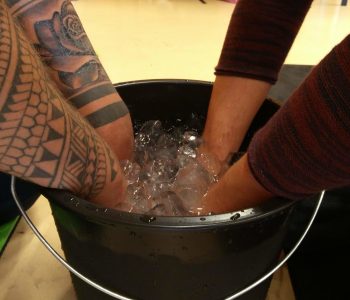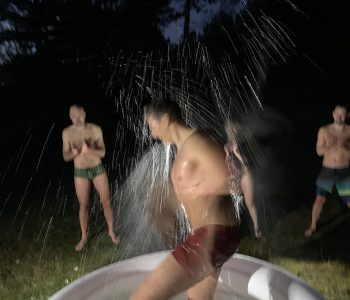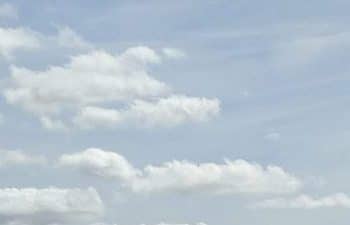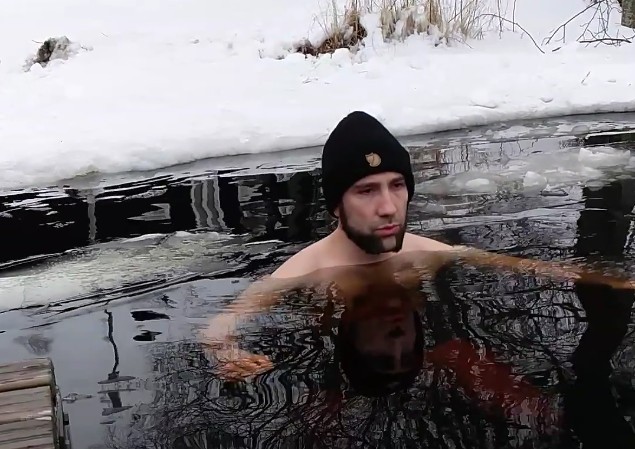 Science
Science What happens when we breathe?
A cycle of life
Up in the sky the sun circles on its path from horizon to horizon, day by day, year by year. The sun is huge, 1,390,000 kilometers in diameter. You can fit 1,000,000 earths into the sun! And inside the sun a gigantic nuclear reaction is producing an unbelievable amount of heat and energy. A part of this energy radiates into the universe. High energetic particles and light. Eight minutes and 20 seconds after leaving the surface of the sun, after traveling 150 million kilometers through space, some of this energy arrives on our earth and gives you this warm feeling when it kisses your face on a sunny morning. But it also gives energy to virtually all live on earth, and the sun rays that stroked the skin of the dinosaurs 65 million years ago are now fueling your car or your commuter train when you go to work tomorrow morning.
Now what does this have to do with breathing? Well, the sun does not only warm your face, but it also kisses the leaves of millions and millions of plants in every corner of our little planet. And these green leaves use the energy from the sun to grow and prosper: they literally convert sunlight into energy that they can use to grow themselves and eventually also allows animals including you and me to grow. And this is how it works:
The air that surrounds you and me and also all those plants consists of 78 percent nitrogen, 21 percent oxygen, 1 percent of other gasses such as argon, a bit of vapor, and 0.04% carbon dioxide. Carbon dioxide or CO2 is mostly called out for its role in climate change and global warming, but actually it plays an important role for life on earth.
It consists of one atom of carbon and two atoms of oxygen, which are held together by strong forces that you can imagine as a rubber band.

Now the plants need carbon to grow their structures, their branches and trunks, their roots, their leaves, and also the sweet sugars that you devour when you get the first strawberries of the year or the sweet bananas in your fruit salad.
The only difficulty the plant faces is cutting the rubber band between the carbon and the two oxygens, and to do so, evolution has developed a process called photosynthesis. In all these billions and billions of leaves of all plants on planet earth, the same process happens: chlorophyll, the pigment that makes the leaves appear green, captures the sunlight, which contains the energy from the sun. This energy is strong enough to cut the rubber band between the carbon and the oxygen. Six parts of carbon dioxide together with twelve parts of water that the plant has sucked from the ground are converted into one part of glucose, better known as dextrose or simply sugar. The plant will use this to grow its structures. In the process also some of the water is left over, and most importantly, six parts of oxygen are released from their tie to the carbon. Remember that energy from the sun is needed to cut that tie. If at any time the carbon and the oxygen come together again, the same amount of energy will be released and available to work other cool stuff, as we will see in a small while.
Now, we let the plant grow for a while, storing up all that sugar while releasing oxygen into the atmosphere. After a little while, man comes and eats the plant, or maybe cow comes, eats the plant, and man eats cow. It doesn’t really matter whether a cow is involved or not, in the end man gets the glucose from the plant into his belly, either in its original form, or slightly modified. From there, after a while, the glucose ends up in our blood and our tissues and every cell in our body.
And now, finally, we will talk about breathing. Man breathes air, 78 percent nitrogen, 21 percent oxygen, 1 percent of other gasses such as argon, a bit of vapor, and 0.04% carbon dioxide. While the plants are mostly interested in the carbon dioxide, man is more interested in the oxygen. With every breath, 21 percent oxygen streams into our lungs. The lungs are like a tree. The trachea, the main airway, splits into two big branches, the bronchi. From there, smaller and smaller airways divert that eventually end in millions of tiny bubbles, the alveoli.

The alveoli are tightly interleaved with blood vessels. Here, the oxygen can get into the blood. But it doesn’t just jump from the air into the liquid blood, but it attaches to the red blood cells, the haemoglobin, in a process called gas exchange. Piggyback on the haemoglobin, the oxygen is pumped by our heart through our blood vessels. First through huge veins, like highways in the body. These highways branch again and again into smaller and smaller vessels, that allow to transport blood — and haemoglobin with the oxygen riding piggyback — to every single cell of our body. To the organs, to the muscles and to the brain.
If a cell signals that it needs oxygen, the hemoglobin releases the oxygen into the cell. Remember that in the cell some of the glucose that we have eaten earlier is already waiting. And now the human counterpart to photosynthesis is starting: almost all cells in the human body contain miniature power plants, the mitochondria. Mitochondria supposedly were independent organisms a few billion years ago, but decided to partner up with more complex cells somewhere in evolution, trading protection from the bigger cell for capability to produce energy. The mitochondria can take the glucose, and together with the oxygen they invert the photosynthesis. The glucose contains the carbon that the plants have stored there during photosynthesis. The mitochondria recombine that carbon with oxygen from the air to carbon dioxide. As a byproduct some water is produced (remember that photosynthesis consumed water) — so we are back to the original substances that were involved in photosynthesis. So what is the gain here?
Remember that we mentioned earlier that energy is released when the oxygen hooks up with that carbon again? This is where all the magic happens: the mitochondria capture that energy in a structure called adenosine triphosphate, or ATP. And ATP is the fuel of our bodies. It powers our heart, that beats 60 times per minute for as long as we live. It powers your muscles for every movement that you do. And it powers the cells of your brain that allow you to think, to act, and to be human.
To finalize the breathing cycle, let’s quickly see what happens to the carbon dioxide that the mitochondria synthesized: the cell releases it into the bloodstream — actually it jumps onto the same haemoglobin that delivered the oxygen to the cell. The carbon dioxide then rides piggyback through the blood vessels back to the lungs, where it transfers in the alveoli into the lung. With the next exhale it is released into the atmosphere, and will eventually be used by a big tree or a beautiful fern or a sweet strawberry plant to grow their fruits.
So literally, every single one of us breathes sunlight and is powered by sunlight. Summarized, the sun is a giant nuclear power plant, sends light and with it energy to the earth. Plants store that energy as glucose and convert carbon dioxide into oxygen in the process. Later, us humans eat that glucose and breathe that very oxygen, and convert it back to carbon dioxide and the energy that we need to live in the form of ATP. A cycle of life, and not unique to mankind, but we share it with all animals on earth.
And that is what happens when we breathe.
Oh, and the dinosaurs? The same things happened 65 million years ago, dense forests covered the land and captured the energy of the sun. Eventually, the forests died, got covered by layers and layers of sediments, and transformed into coal and oil over the eons. So in the end, the gasoline in your tank is just captured and conserved energy from the sun.







